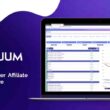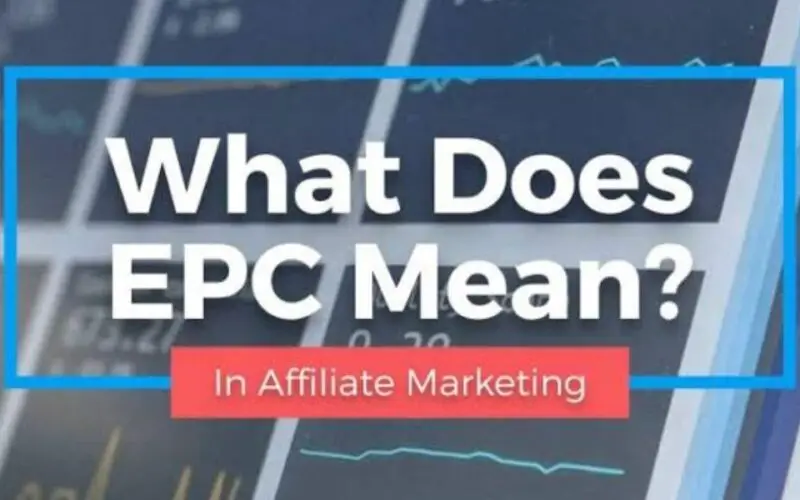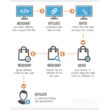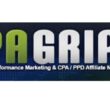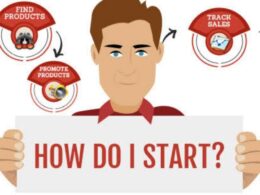In Affiliate Marketing, What Does EPC Stand For?
The average amount of money you receive each time someone clicks one of your affiliate links is referred to as earnings per click (EPC) in affiliate marketing.
Pay-per-click (PPC) advertisements are commonly used in EPC affiliate marketing.
However, the EPC affiliate definition is the most significant measure for affiliate marketing performance.
This is because it expresses the profit power in specific terms.
This is true, If you’re running an affiliate program or sharing links from affiliate partners..
This is why:
Although many new affiliate marketers are unfamiliar with EPC, what it is, and how to measure it (which we will discuss shortly), they are familiar with another popular marketing term: “cost per click” (CPC).
So they look for products with the lowest CPC, then run costly pay-per-click ads to that affiliate link in the hopes of recouping their advertisement expenses.
Oh, and they’d like to make a buck, too.
However, if you can measure EPC correctly, you won’t have to rely on luck.
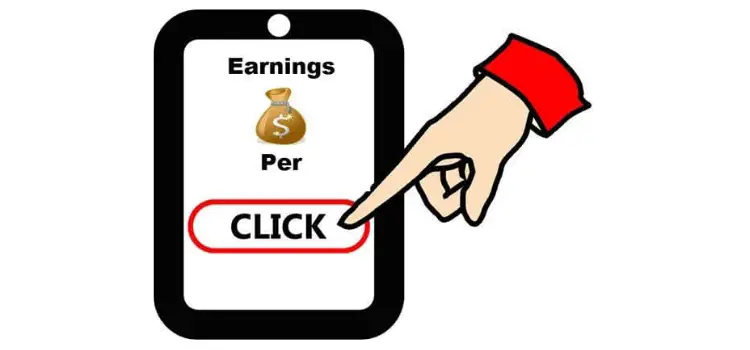
You can predictably make data-driven decisions and even target other affiliate products with higher CPCs.
And once you know your EPC, the CPC becomes meaningless.
In other words, you’ll be successful as long as you still earn more than you spend.
That’s why it’s amusing to us when people ask, “What is a good EPC?”
The response is simple: if your earnings per click are higher than your cost per click, you’re doing well.
And you’ll be making money. There’s no way around it.
You’ll be well on your way to increasing profits from your affiliate marketing campaign once you grasp this idea.
How do we calculate EPC?
It’s simple to figure out how much money you’ll make per click:
EPC is calculated by dividing the total amount of commissions you gain by the number of clicks your affiliate links received.
That’s it.
Assuming you were running advertisements for an affiliate product.
Your net benefit from the campaign was $100, with 50 clicks on your affiliate page accounting for all of it.
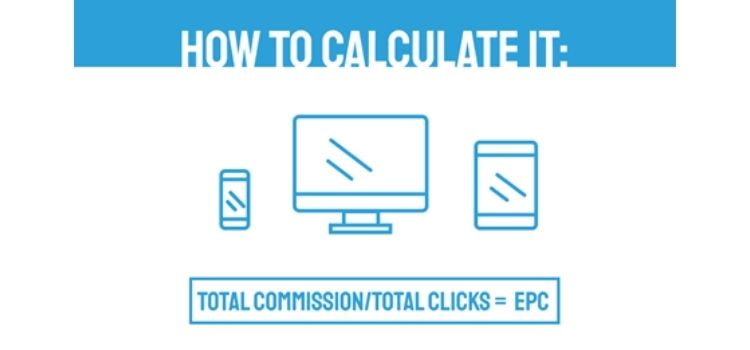
That means your EPC is determined as follows: $100 (profit) divided by 50 (total clicks) equals $2.
Furthermore, several affiliate marketing platforms keep this information on hand for affiliates.
They’ll figure out what their typical affiliate EPC is for you.
Since the average is calculated using data from the affiliate program’s network of partners, this information is often referred to as “network EPC.”
These earning per click affiliate programs provide you with this knowledge to assist you in making more informed affiliate product choices.
We know what you’re wondering right now:
Why doesn’t anyone just select products with a higher EPC than CPC and pump advertising to the affiliate link if they know their earnings per click and cost per click?
Isn’t it true that you’ll make more money than you spend in the end?
In a nutshell, yes and no.
The issue is that these are average earnings per click, which means they are not consistent for all affiliate partners.
Someone could link to a product with a $3.00 EPC and another with a $1.00 EPC.
As a result, the EPC average is $2.00.
However, the marketing campaign could not produce the same results.
This is why selecting a product solely on the basis of the highest EPC affiliate program isn’t as foolproof as it might seem.
Only by testing your EPC on affiliate links would you be able to determine your EPC.
And that’s exactly what the rest of this article would be about.
Because we’re going to show you how to quickly increase your EPC and push more affiliate sales.
How to Increase your Earnings Per Click
Affiliate marketers also use paid advertisements to promote their affiliate products.

However, the following seven tactics will help you boost your income without relying on paid advertising.
- Re-engage visitors who have left with the intention of leaving.
First and foremost, you’ll want to develop a targeted popup to show across your site for your affiliate product.
- Use pop-ups on your site to share affiliate links.
Exit-intent popups may not be enough for certain affiliate marketers.
Does this imply that you should abandon all popup campaigns?
Certainly not.
Instead, you can use timed popups on individual pages around your site to build other targeted promotions.
That way, you can match the content of the page your audience is reading with the offer (affiliate product) in your popup.
Consider a pair of sunglasses as your affiliate product.
So you write a blog post in which you compare various styles of sunglasses to see which ones are best for your target audience.
You show your popup when people start reading the post (showing a strong interest in the topic).
You know your audience is a strong candidate for this offer because they’ve already read your blog post about sunglasses.
More people can click on your affiliate products as a result of this.
However, since your cost-per-click (CPC) is now lower (due to the fact that you are no longer running paid ads), your overall EPC would be significantly higher.
What’s the best way to set up this targeting rule?
This will be the result of combining two rules:
- Page-level targeting
- Time spent on page
Popups that are specifically targeted to increase earnings per click-min
Having more affiliate sales with a higher EPC can be as simple as targeting your affiliate product popup.
- Make a Floating Bar That Isn’t Obtrusive
Some website owners dislike the concept of having pop-ups on their pages.
They are concerned that popups would detract from the user experience (UX).
In the vast majority of instances, this is obviously not true.
Pop-Ups aren’t disliked by online users; they despise seeing the same popups over and over.
This leads to a condition known as “popup fatigue,” which can teach your site’s visitors to ignore the messages in your popups.
That’s why it’s important to show your affiliate products using a range of campaign styles.
A floating bar is one that we suggest.
Floating bars are a completely non-intrusive way to provide information about your partner products to your visitors.
It sits discreetly at the top of the user’s page in a way that is difficult to miss but does not detract from the user’s experience.
While we still recommend targeting your floating bar by page, it can also be used for site-wide promotions.
This can be a perfect campaign for increasing the EPC and driving more affiliate sales, regardless of where and when you show the floating bar.
- Incorporate affiliate links into your blog posts
By producing dependable, high-quality content on your website, you will attract a lot of organic traffic.
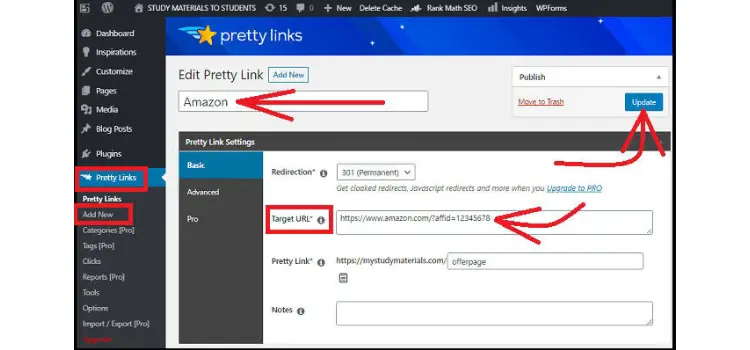
Starting a blog is the most common method for doing so.
You will start ranking on search engines like Google and attracting more traffic to your website by adopting SEO best practices.
Then, to increase sales, you can add your affiliate links directly to the content
Then, as we mentioned in our first tip, we could use organized popups to draw attention to the offer.
Your readers will be able to both click the affiliate link in your content and see the targeted fullscreen popup on the content page as a result.
This effectively doubles the chances of sealing the deal.
This is a fantastic way to boost your EPC.
Furthermore, since your content plan relies on organic traffic, your CPC is essentially zero.
Any transactions made as a result of your content or the affiliate product popup will result in a 100% commission (minus the time spent creating the content).
Us the following types of blog or vlog posts as a starting point:
- Comparative articles
- Product reviews
- Product list
- Resource pages
However, if you have an affiliate link in your material, it’s always a good idea to alert your readers.
WPBeginner excels in this area.
They inform users that affiliate links are included, but they also assure them that they only promote products that they use and enjoy.
If you have affiliate links, your readers won’t mind.
They may be concerned if it seems that you are attempting to deceive them into making a purchase.
So be honest about the fact that your article contains an affiliate link, and your readers won’t blink an eye if they see one.
- Incorporate affiliate links into your email campaign
Okay, we’ll take it easy on this one. Since affiliate links in email can be used in one of two ways:
Profits are very large
Having your email service provider ban you
It’s not difficult to figure out which result you should aim for.
The strategy is the only distinction between the two outcomes.
Spam is frowned upon by email service providers. It lowers their open rate percentages and, to be honest, is bad for business.
They’ll intervene and shut it down if they see affiliate marketers with large email lists sending out campaigns with affiliate links.
However, this does not preclude you from using affiliate links in your emails.
It simply means you must do so in a non-spammy manner.
You can do this by periodically sending useful content to your email list.
Then, somewhere in your automatic email collection, include an email highlighting an affiliate product.
As a result, your series may look like this:
- Email greetings
- Sharing of content
- Maintain the relationship.
- An email with an affiliate link
- More sharing of content
- More sharing of content
- Maintain the relationship
And so forth.
The specific email series will be determined by you and your business.
However, the argument remains the same: don’t bombard your email list with affiliate links on a daily basis.
Drip is one email service provider you may want to look into.
Drip excels at putting together email marketing strategies.
They have a drag-and-drop builder that allows you to create trendy designs that will grab the attention of your audience.
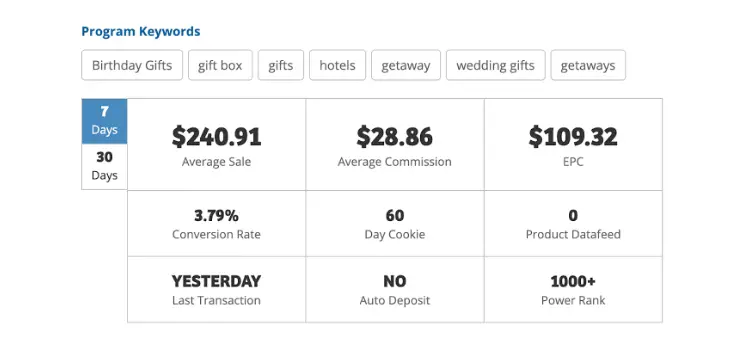
Furthermore, we have it on good authority that affiliate links are permitted in your emails if used responsibly.
Constant Contact and Sendinblue are two other providers that have similar affiliate link policies.
After all, it would be a shame to put in all the effort to construct your email list just to have it shut down because you were spamming your customers.
When your list is full of committed subscribers, you can use this low-cost platform to increase affiliate sales and increase your EPC.
- Test and tweak your copy before repeating the process.
A/B testing is an essential part of any successful marketing campaign.
Unfortunately, not enough marketers devote the time and effort necessary to conduct effective A/B tests.
They’re missing out on a lot.
A/B testing is needed if you’re including affiliate links in your opt-in campaigns or emails.
Because there’s a slim to zero chance you’ll nail your landing page or email copy on the first try.
It takes time, commitment, and, most importantly, testing to get the right message across to your target audience.
That way, you can experiment with the copy on the landing page, add videos, try out different photos, and make any other minor changes you think would help your EPC.
From there, you can see the campaigns are bringing in the most revenue and adjust the landing pages accordingly.
However, you’ll need to deal with your email service provider when it comes to emails.
Drip, Constant Contact, and Sendinblue are only a few of the services that make A/B testing a breeze.
To make better, data-driven decisions about your email promotions, you will get reliable reports on your open and click-through rates.
That takes us to our final suggestion for increasing your Earnings Per Click.
- Track and Calculate Your Metrics
We’ve always said it, and we’ll say it again:
Awareness isn’t influenced in the marketing world. The benefit comes from information.
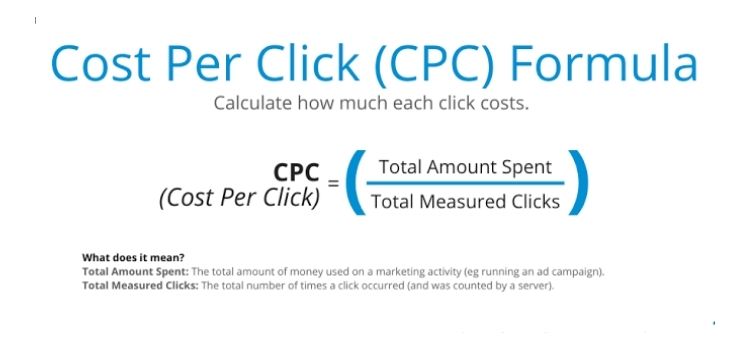
The following metrics must be kept in mind:
- CPC (yours, not the provided averages)
- EPC (yours, not the provided averages)
Results of A/B testing for your
- Affiliate landing pages
- Email marketing campaigns
- PPC (pay-per-click) advertisements
These five metrics will determine whether you excel as an affiliate marketer or fail spectacularly.
Your marketing campaign can be driven by the first two metrics (EPC and CPC).
With this knowledge, you can make minor changes to your affiliate sharing strategy to ensure that you never spend more than you receive.
The final three metrics (which include A/B tests) will assist you in improving your web copy.
As a result, you can fine-tune your communication with your target audience to achieve the best results.
This should, in theory, lower CPC costs while can EPC and drive more sales.
That’s all there is to it for now!
There you have it: seven concrete and actionable ways to boost your Earnings Per Click.


